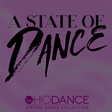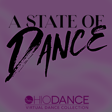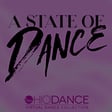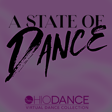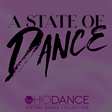
Padma Chebrolu: The Wisdom of Indian Dance and Living a Life Fueled by Joy
Season Two, Episode One: This month’s guest is Padma Chebrolu. Padma is an accomplished teaching and performing dance artist and is the artistic director of the Cultural Centre of India (CCI) which she founded about 30 years ago in Cincinnati. Her exemplary artistic abilities, leadership, and creativity have created tremendous impact on the arts education and public appreciation for the heritage arts in Ohio’s schools and community organizations.
Padma is the recipient of the 2021 Ohio Heritage Fellowship Award from the Ohio Arts Council (OAC) in recognition of the dedication and significant contributions she had on the community through the advancement and preservation of traditional arts. She is also the recipient of the 2022 OAC Master Artist award for Traditional Arts Apprenticeship for preserving cultural heritage. She has been recognized by the Honorable Mayors of Cincinnati Mr. John Cranley (2019) and Mr. Aftab Pureval (2022) for her artistic influence and contributions to the Cincinnati community. She has been on the Ohio Teaching Artist Roster since 2019, Cincinnati Arts Association’s Artist on Tour for schools in the Greater Cincinnati area since 1997, and has been recognized by Cincinnati Arts Association as the 2022 Art Educator. Padma frequently serves on OAC grant review panels. She is on the board of the Ohio Alliance for Arts Education and on the advisory board of OhioDance.
OhioDance A State of Dance is a six-part series coming out the fourth Friday of each month through November 2023.
This podcast is driven by the OhioDance mission to secure the foothold of dance in Ohio through increasing visibility, firming viability, and elevating the position of dance in Ohio.
In 2016, a five-person team set out on a mission to capture the achievements of persons and institutions who have shaped the intricate diversity of dance history and practice within the state of Ohio and weave them together in an easily accessible digital format. This we call the OhioDance Virtual Dance Collection. As of 2024 we have highlighted 37 individuals and institutions. The team has traveled over 5000 miles and interviewed hundreds of individuals in all five regions of Ohio. vdc.ohiodance.org
If you like what you are listening to and are not a member of OhioDance, you can go to ohiodance.org and click the membership button to join and receive the many benefits that come with your membership. You can also donate through our purple donate button.
